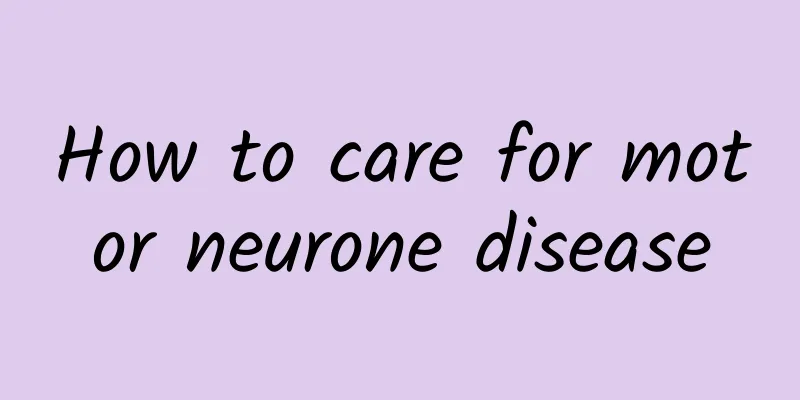How to Treat Migraines

|
Migraine is a condition that many people suffer from. After this problem occurs, it must be improved in time. If the migraine continues to develop, it will have a great impact on the brain and will also pose a threat to the patient's life and work. So how to treat migraine? There are many ways to improve this problem. When choosing, you must first understand it so that you can know how to improve it. So how to treat migraine? The following is a detailed introduction. However, when choosing these methods, you should also be careful not to use them arbitrarily. You should focus on the one that suits you. This is also very critical. How to treat migraine: 1. Treatment during the attack period (1) Mild to moderate headache NSAIs alone may be effective; if they are ineffective, migraine-specific drugs may be used. Opioid preparations such as pethidine are also effective for confirmed acute migraine attacks. Due to their addictive nature, routine use is not recommended. However, for cases where ergot preparations or triptans are contraindicated, such as those with concomitant heart disease, peripheral vascular disease, or migraine during pregnancy, pethidine can be given to terminate the acute migraine attack. Migraine during pregnancy can only be treated with opioids such as pethidine; other drugs may increase the risk of fetal malformations or pregnancy complications. (2) For moderate to severe headaches, migraine-specific therapeutic drugs can be used directly to improve symptoms as quickly as possible. For some patients who have severe headaches but have responded well to NSAIDs in the past, NSAIDs can still be used. (3) Associated symptoms Nausea and vomiting are prominent accompanying symptoms of migraine and are also common adverse reactions to drugs. Therefore, it is necessary to use antiemetics (such as metoclopramide or intramuscular injection of metoclopramide) in combination. For patients with severe vomiting, small doses of perphenazine or chlorpromazine can be given. People who are irritable can be given benzodiazepines to help them calm down and fall asleep. Commonly used drugs during the attack period: ① Non-specific analgesics: such as non-steroidal anti-inflammatory drugs (NSAIDs) and opioids. ② Specific drugs: such as ergot preparations and triptans. Nonsteroidal anti-inflammatory drugs (NSAIDs): such as acetaminophen, naproxen, ibuprofen, etc. Opioids: such as pethidine. Ergot preparations: ergotamine and dihydroergotamine (DHE), can terminate acute attacks of migraine. Triptans: Commonly used drugs include sumatriptan, naratriptan, rizatriptan, zolmitriptan, and almotriptan. 2. Prevention and treatment It is suitable for patients with frequent attacks, especially those with attacks more than once a week that seriously affect their daily life and work; those who are ineffective in acute treatment or cannot undergo acute treatment due to side effects and contraindications; and those with special variants of migraine that may cause permanent neurological deficits, such as hemiplegic migraine, basilar migraine or migraine infarction. It includes two aspects: drug treatment and non-drug treatment. (1) Non-drug treatment The main thing is to strengthen education so that patients can understand the pathogenesis and treatment measures of migraine, help patients establish scientific and correct prevention and treatment concepts and goals, maintain a healthy lifestyle, and find and avoid various migraine triggers. Triggering factors include mental stress, psychological pressure, lack of sleep, noise and strong odors. Food and drinks such as cheese and red wine. (2) Drug treatment ① β-adrenergic receptor blockers, such as propranolol and metoprolol; ② Calcium ion antagonists, such as flunarizine and verapamil; ③ Antiepileptic drugs, such as valproic acid, topiramate, and gabapentin; ④ Antidepressants, such as amitriptyline, imipramine, and fluoxetine; ⑤ 5-HT receptor antagonists, such as pizotifen. Among them, propranolol, amitriptyline and valproic acid, three structurally unrelated drugs, are the mainstays of preventive treatment. If one drug is ineffective, another can be used. The above is a detailed introduction on how to treat migraine. When treating migraine, you can completely follow the above methods. It is common that the time required to improve this type of disease is very long, and it is also critical for patients to adjust their own body and mind. This should be paid attention to when treating migraine. |
<<: How to Treat High Uric Acid
Recommend
What to do if you get a headache from being caught in the rain?
The weather is always changeable, and getting cau...
Effects of Haigou Shenbao Pills
Gou Shen Bao Wan is actually a health product tha...
What are the common Chinese herbal medicines for clearing away heat and detoxification?
With the continuous advancement of science and te...
Can I still have a baby after having an abortion for the second time?
It is difficult to say whether you will get pregn...
There are white spots on the baby's body
When a baby is just born, his physical fitness is...
How long should I wait to take Chinese medicine?
Taking Chinese medicine is a science. If the wron...
How to treat severe body coldness
Excessive body coldness is a factor that leads to...
What does amylase do in the body?
Clinically, amylase mainly plays a certain role i...
Symptoms and treatment of gastritis
Gastritis is a common medical disease in daily li...
Can't I eat mung beans when taking Chinese medicine?
It is not necessarily that you cannot eat mung be...
What to do about impotence, premature ejaculation and kidney deficiency? Dietary remedies are effective
Impotence and premature ejaculation are probably ...
What to eat for urinary tract infection? Eat more of this
Urinary tract infection problems can have a great...
Pneumococcal vaccine
Speaking of pneumococcus, some of you may not kno...
Why are my hands itchy and peeling?
Hands are our second face. We should pay attentio...
What are the precautions for Huoxiang Zhengqi Liquid?
Summer is coming. In the hot summer, many people ...









